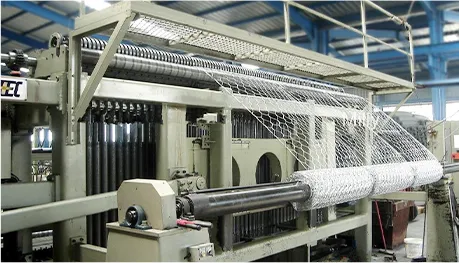-
 Phone:
Phone: -
 Email:
Email:

Exploring the Properties and Applications of Hexagonal Wire Structures
The Fascinating World of Hexagonal Wire
Hexagonal wire, a versatile and innovative material, is gaining popularity in various industries due to its unique shape and structural properties. This article delves into the intricacies of hexagonal wire, exploring its design, applications, and potential future in modern engineering and architecture.
What is Hexagonal Wire?
Hexagonal wire refers to wire strands that are shaped into a hexagonal cross-section. This design not only differentiates it from traditional round wire but also enhances its mechanical properties and functionality. The hexagonal geometry allows for a tighter packing arrangement, leading to greater surface area contact among wires. This feature makes it an excellent choice for applications requiring high tensile strength and stability.
Manufacturing Process
The production of hexagonal wire involves several steps. Initially, raw materials, typically steel or aluminum, are drawn into thin wire strands. These strands undergo a cold drawing process, which not only reduces their diameter but also enhances their strength through work hardening. Following this, the wire is placed into specially designed molds to form a hexagonal shape. This process requires precision, as any deviation in shape can affect the wire's performance in its applications.
Applications of Hexagonal Wire
Hexagonal wire boasts a wide range of applications across various industries
1. Construction One of the primary uses of hexagonal wire is in construction. Hexagonal wire mesh is popular for reinforcing concrete structures since it can distribute forces more evenly than traditional wire mesh. This property ensures greater stability and longevity for buildings, bridges, and other infrastructure.
2. Agriculture In agriculture, hexagonal wire is often used to create cages and enclosures for livestock and poultry. The design provides excellent visibility and air circulation while ensuring safety and security. Additionally, hexagonal wire fencing is ideal for protecting crops from wildlife, as it can be installed closely to the ground to deter digging animals.
3. Art and Design Hexagonal wire has also found a niche in the realm of art and design. Artists and designers utilize its unique geometric shape for creating visually striking sculptures, installations, and furniture. Its aesthetic appeal combined with its structural integrity allows for artistic expressions that push traditional boundaries.
hexagonal wire

4. Industrial Uses Various industries use hexagonal wire for creating durable protective barriers, sieves, and filters. In the food and beverage industry, for instance, hexagonal wire mesh is used in equipment for processing and packaging, ensuring safety and functionality.
5. Erosion Control In environmental applications, hexagonal wire is employed for erosion control in landscaping projects. It helps stabilize soil on slopes, giving vegetation a foothold and reducing runoff, thus promoting ecological sustainability.
Advantages of Hexagonal Wire
The hexagonal shape of the wire presents several advantages over traditional wire forms
- Strength and Durability The geometry of hexagonal wire enhances its tensile strength, making it resistant to bending and breaking under pressure. This quality is particularly beneficial in construction and infrastructural applications.
- Space Efficiency When packed closely, hexagonal wire offers a space-efficient arrangement that can lead to reduced material usage in projects without compromising structural integrity.
- Aesthetic Flexibility The unique design allows for creative freedom in artistic projects, enabling artists and designers to experiment with forms that are both functional and visually captivating.
Future Prospects
As technology advances and the demand for innovative engineering solutions grows, hexagonal wire is poised to play an increasingly significant role in various sectors. Research into new materials and manufacturing techniques may further enhance its properties, leading to even more applications. Its potential for sustainable practices, especially in construction and agriculture, aligns with global shifts toward environmentally friendly methodologies.
Conclusion
Hexagonal wire stands out as a remarkable material that blends strength, versatility, and aesthetic appeal. From construction to art, its applications are vast and varied, and it continues to evolve as industries seek out materials that provide both functionality and sustainability. As we move forward, the potential of hexagonal wire could redefine standards across multiple domains, making it an exciting topic for future exploration and innovation.
-
Wire Mesh for Every Need: A Practical SolutionNewsJul.25,2025
-
Steel Fences: Durable, Secure, and Stylish OptionsNewsJul.25,2025
-
Roll Top Fencing: A Smart Solution for Safety and SecurityNewsJul.25,2025
-
Cattle Farm Fencing Solutions for Maximum SecurityNewsJul.25,2025
-
Affordable Iron Binding Wire SolutionsNewsJul.25,2025
-
Affordable Galvanized Wire SolutionsNewsJul.25,2025
-
Wire Hanger Recycling IdeasNewsJul.25,2025








